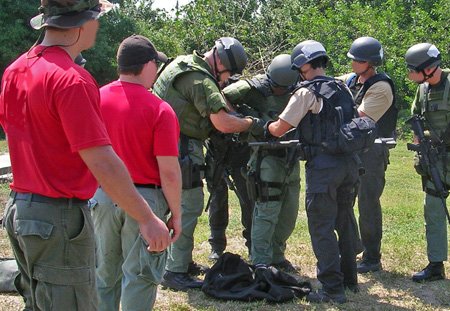
Two of the most common questions I get from officers around the country are: “How did you get started in training?” and “What is your advice for me (someone interested in training)?”
Answering the first one is simple and it’s probably the same answer used by many instructors: “I kind of just fell into it.” My first ‘gig’ was assisting a PPCT Instructor Trainer friend of mine, Bob Nicholas. I enjoyed it as doing knee strikes, pressure points and arm bar takedowns was fun. But there was very little lecture and I didn’t have to put any training points together in a lesson plan.
What moved me to another level was an order by my lieutenant, Dane Cuny, when I was a sergeant. He dropped the bomb on me during the midnight shift about 22 years ago. “Hey, you’re going to have to teach a BASSET class.” “A BASSET class, what the hell is a BASSET class?” His response was, “I dunno, but it’s got something to do with alcohol serving. You have to teach it to everyone in the Village who serves booze at every bar and restaurant. It’s a state certified class and six hours long.” I went nuts. “Six hours?! To thousands of people?! Why the heck do I have to do it?” “Because I don’t want to,” my commander responded. And I had no real retort for that, but I still went into a panic.
A few years earlier I was forced to give a talk to some Cub Scouts and their parents. It had to be – I was told – 15 minutes long. “15 minutes!” I said. “What the hell am I gonna talk about for 15 whole minutes!” “I don’t care, just don’t swear,” a different lieutenant warned as he delivered the order. I was sick to my stomach for weeks prior to that talk in a gymnasium in front of a whopping 30 people. But, I was shocked at how fast 15 minutes flew by when I was talking about something I was passionate about.
Jump forward to the Beverage Alcohol class. I prepared more for that six hours than for anything I had ever done in my life up to that point. Nothing in college took up as much time or emotion. I had, literally, 4 ½ hours of video clips ready to go and still wondered how I was going to fill the other 90 minutes.
On the day of the first class I had the old plastic milk crates with hanging file folders stuffed with transparent overheads. There were hundreds of them. In another milk crate I had about 20 VHS tapes set to launch at strategic points in each video. I didn’t get to 90% of them. The class went great, and I was hooked. I had a ball and did that class for another 18 years every couple of months.
I give credit to my brother Bill for helping me learn how to teach. Eight years my junior he was familiar with teaching adults and he gave me some literature and books on the subject. While I have long since lost all of that material I have never forgotten the overall points contained therein. By reading what he gave me and using my own experiences as a student, I learned how to teach adults by remembering the following:
- Know and be Passionate about the subject matter.
- Don’t ever let them relax. Keep them guessing about what is coming next.
- Be redundant without being obvious, hammer home points using different examples, videos, etc.
- Limit the number of points to be made: 3-4 an hour max.
- Adults need to become emotionally involved in the lesson.
- Adults have to believe that the subject being taught matters to them personally.
- They have to believe that what they are learning will work in the real world.
And maybe most importantly;
8. The point of any lesson is for students to learn: it’s not designed to give an instructor a pontification platform designed merely to stroke an ego.
I’ve worked with some fantastic instructors; I’ve hired many of them to work with my company LifeLine Training & Calibre Press. But over the years I’ve seen some pretty bad ones. They were bad because they violated all the above rules but in particular number 8.
Ending advice: Do your homework constantly. Focus on the people in the seats. Know your goals. Be one of the people in the room. Preaching and sermonizing is the surest way to lose your crowd. Check your ego at the door and engage the group. If you do these things everyone in the room will learn, including you.